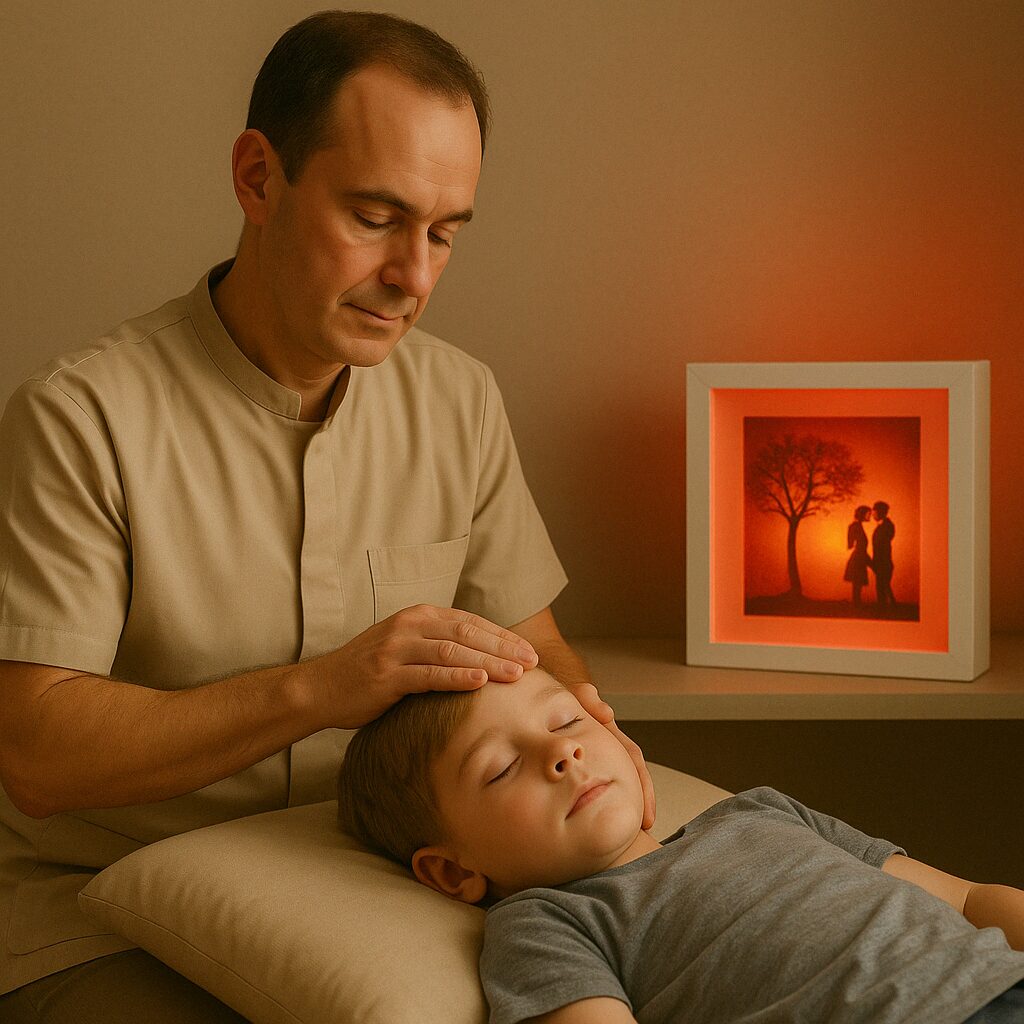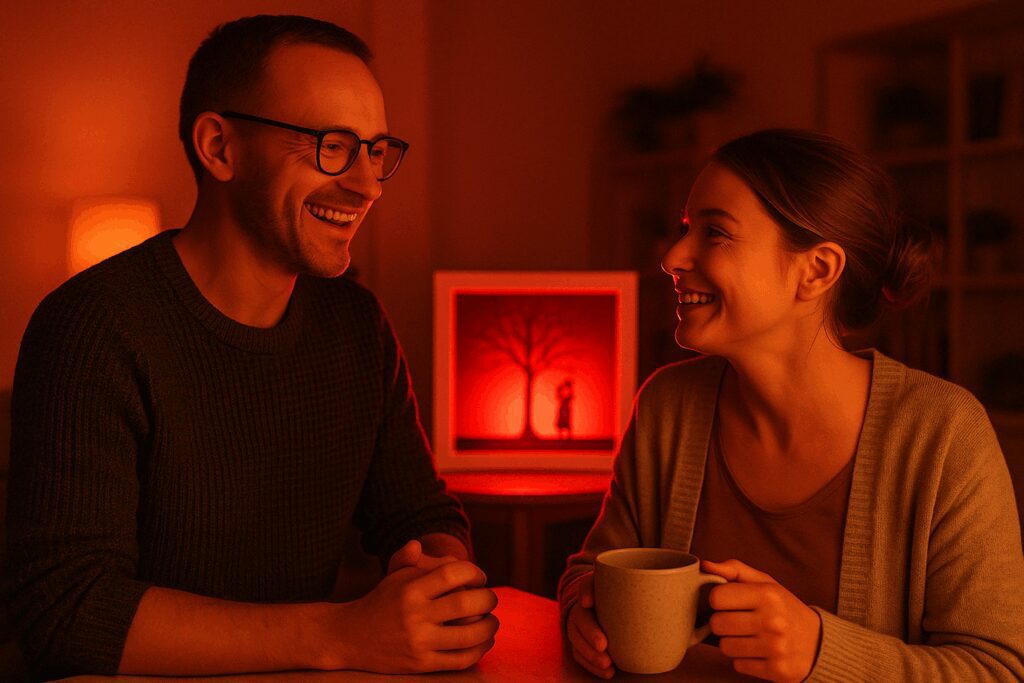About LED Box Frame
Welcome to LED Box Frame – where innovative design meets heartfelt storytelling. We’re a small but mighty UK-based team creating bespoke LED lightboxes that bring your favourite memories to life.
Each handcrafted frame blends modern aesthetics with the calming benefits of light therapy, making it more than décor – it’s an experience. Whether it’s a treasured photo, a gift with meaning, or a unique addition to your home or therapy space, our eco-friendly LED frames turn moments into radiant art.
Inspired by wellness, creativity, and connection, LED Box Frame lets you showcase 1000s of swappable images in just one glowing frame.
Inspired by Wellness. Refined Through Innovation.
Our Story: Illuminating Lives Since 2018
The idea behind LED Box Frame was sparked during my work as an osteopath, supporting individuals with musculoskeletal pain and helping children facing sleep challenges. Time and again, I witnessed how calm, light-filled environments helped reduce anxiety and promote healing—especially in children.
During those sessions, I saw a clear connection: soft lighting paired with meaningful imagery created a soothing space for rest and emotional comfort. That insight lit the path toward developing the first LED lightbox frame.
Backed by science, our journey became more than just aesthetic. A 2012 study revealed that athletes exposed to 30 minutes of red LED light nightly experienced deeper sleep, increased melatonin levels, and improved performance. More recently, a 2020 study in the Journal of Psychosocial Oncology Research and Practice found that light therapy significantly enhanced sleep quality in cancer survivors battling insomnia.
What began as a therapeutic concept has evolved into a powerful wellness tool. Today, each LED Box Frame offers more than beautiful light—it offers calm, connection, and comfort through purposeful design.


Crafted to Support Your Daily Wellness Routine
Sleep Better with Light: The Power of Circadian Rhythm
Your body runs on a natural internal clock—known as the circadian rhythm—which controls your sleep and energy patterns based on light exposure. When exposed to light, especially in the morning, your body signals alertness and wakefulness. As evening approaches and light fades, melatonin production kicks in, preparing you for restful sleep.
Dr. Raj Dasgupta, clinical professor at USC’s Keck School of Medicine, explains that light—specifically its wavelength—has a profound effect on circadian health. “It’s not just about brightness or color,” he says. “Blue light in the morning helps energize, while red light in the evening promotes relaxation and sleep.”
By aligning your environment with your natural rhythms, LED Box Frames help support healthier sleep, energy, and overall wellness.
How Red Light Supports Natural Sleep Without Disrupting Your Rhythm
Red light is often praised for its sleep-enhancing benefits—but according to Dr. Mariana Figueiro, the effect isn’t due to red light actively improving sleep, but rather its low impact on melatonin suppression.
She explains that using red light in the evening helps reduce disruption to your circadian rhythm, especially when compared to harsh blue or bright lights, which can delay sleep. By replacing stimulating light with red light before bed, you’re creating a more sleep-friendly environment—one that allows your natural melatonin production to do its job.
In short, it’s not about adding red light during sleep, but about minimizing the wrong kind of light beforehand—a small switch that may lead to noticeably better rest.

How Red Light Influences Sleep & Circadian Health
Which Light Should You Avoid Before Bedtime?
Not all light is created equal when it comes to sleep. Certain light wavelengths can disrupt your circadian rhythm, especially if they’re too bright or shine directly into your eyes before bed.
Blue light is one of the biggest culprits. While it’s helpful in the morning—boosting alertness and energy—it can be disruptive at night. Blue wavelengths suppress melatonin, the sleep hormone that helps signal your body to wind down.
Sources of blue light include:
Sunlight, Fluorescent and LED lighting, TVs and computer monitors, Smartphones, tablets, and gaming devices
To improve sleep quality, aim to minimize blue and bright light exposure at least 30 minutes before bed. Try dimming lights around your home and stepping away from screens as the evening progresses.
Can Red Light Therapy Improve Sleep?
Yes—red light therapy shows promise in improving sleep quality, particularly in people with insomnia or circadian-related disorders. Unlike blue light, red light has longer wavelengths that don’t suppress melatonin, making it ideal for evening use.
A 2020 study published in the Journal of Psychosocial Oncology Research and Practice found that red light therapy significantly improved sleep in cancer survivors with moderate to severe insomnia.
Red Light for Mood & Seasonal Depression
Beyond sleep, red light therapy may benefit those with depression and Seasonal Affective Disorder (SAD). During the darker months, it can mimic natural sunlight by stimulating serotonin and reducing cortisol—two key players in mood regulation.
In a study featured in the Journal of Photomedicine and Laser Surgery, participants with major depressive disorder experienced major improvements after receiving near-infrared (NIR) therapy.
Why Red Light Is Safe for Nighttime Use
One of the biggest advantages of red light is its sleep-friendly nature. Unlike blue light, it won’t interfere with melatonin production. In fact, it may enhance it, helping the body naturally shift into rest mode.
Are There Risks to Red Light Therapy?
Generally, red light therapy is safe, but there are a few precautions to keep in mind:
Avoid direct eye exposure to the light source, Speak to your doctor if you’re on medications like lithium, antipsychotics, or antibiotics, as red light may interfere, Some people may experience mild side effects like skin irritation or headaches
If discomfort occurs, stop use and consult your healthcare provider.
The Science: How Light Affects Sleep
Your sleep-wake cycle is guided by your circadian rhythm, a natural 24-hour system that helps regulate hormone production—primarily melatonin. Exposure to short-wave blue light stimulates alertness, which is helpful in the morning, but problematic in the evening.
Red light, with its longer wavelengths, is far less likely to interfere. That’s why using red light therapy at night can help support healthy sleep habits without disrupting your rhythm.
